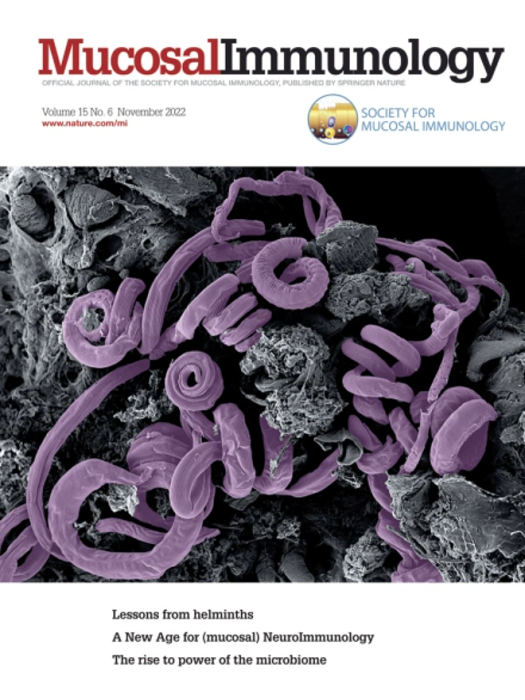A multi-omics microbiome signature is associated with the benefits of gastric bypass surgery and is differentiated from diet induced weight loss through 2 years of follow-up
IF 7.6
2区 医学
Q1 IMMUNOLOGY
引用次数: 0
Abstract
Roux-en-Y gastric bypass (GBP) surgery is an effective treatment for reducing body weight and correcting metabolic dysfunction in individuals with severe obesity. Herein, we characterize the differences between very low energy diet (VLED) and GBP induced weight loss by multi-omic analyses of microbiome and host features in a non-randomized, controlled, single-center study. Eighty-eight participants with severe obesity were recruited into two arms – GBP versus VLED with matching weight loss for 6 weeks and 2-years of follow-up. A dramatic shift in the distribution of gut microbial taxa and their functional capacity was seen in the GBP group at Week 2 after surgery and was sustained through 2 years. Multi-omic analyses were performed after 6 weeks of matching weight loss between the GBP and VLED groups, which pointed to microbiome derived metabolites such as indoxyl sulphate as characterizing the GBP group. We also identified an inverse association between Streptococcus parasanguinis (an oral commensal) and plasma levels of tryptophan and tyrosine. These data have important implications, as they reveal a significant robust restructuring of the microbiome away from a baseline dysbiotic state in the GBP group. Furthermore, multi-omics modelling points to potentially novel mechanistic insights at the intersection of the microbiome and host.
多组学微生物组特征与胃旁路手术的益处相关,并通过2 年的随访与饮食引起的体重减轻区分开来。
Roux-en-Y胃旁路手术(GBP)是严重肥胖患者减轻体重和纠正代谢功能障碍的有效治疗方法。在此,我们在一项非随机、对照、单中心研究中,通过对微生物组和宿主特征的多组学分析,表征了极低能量饮食(VLED)和GBP诱导的体重减轻之间的差异。88名严重肥胖的参与者被招募到两组- GBP和VLED,并在6 周和2年的随访中匹配体重减轻。术后第2周,GBP组肠道微生物群分布及其功能能力发生了巨大变化,并持续了2 年。在GBP组和VLED组之间匹配体重减轻6 周后进行多组学分析,这表明微生物组衍生代谢物如硫酸吲哚酚是GBP组的特征。我们还发现副鳗链球菌(一种口服共生体)与血浆色氨酸和酪氨酸水平呈负相关。这些数据具有重要意义,因为它们揭示了在GBP组中,微生物组从基线生态不良状态进行了重大的稳健重组。此外,多组学建模指出了微生物组和宿主交叉的潜在的新机制见解。
本文章由计算机程序翻译,如有差异,请以英文原文为准。
求助全文
约1分钟内获得全文
求助全文
来源期刊

Mucosal Immunology
医学-免疫学
CiteScore
16.60
自引率
3.80%
发文量
100
审稿时长
12 days
期刊介绍:
Mucosal Immunology, the official publication of the Society of Mucosal Immunology (SMI), serves as a forum for both basic and clinical scientists to discuss immunity and inflammation involving mucosal tissues. It covers gastrointestinal, pulmonary, nasopharyngeal, oral, ocular, and genitourinary immunology through original research articles, scholarly reviews, commentaries, editorials, and letters. The journal gives equal consideration to basic, translational, and clinical studies and also serves as a primary communication channel for the SMI governing board and its members, featuring society news, meeting announcements, policy discussions, and job/training opportunities advertisements.
 求助内容:
求助内容: 应助结果提醒方式:
应助结果提醒方式:


